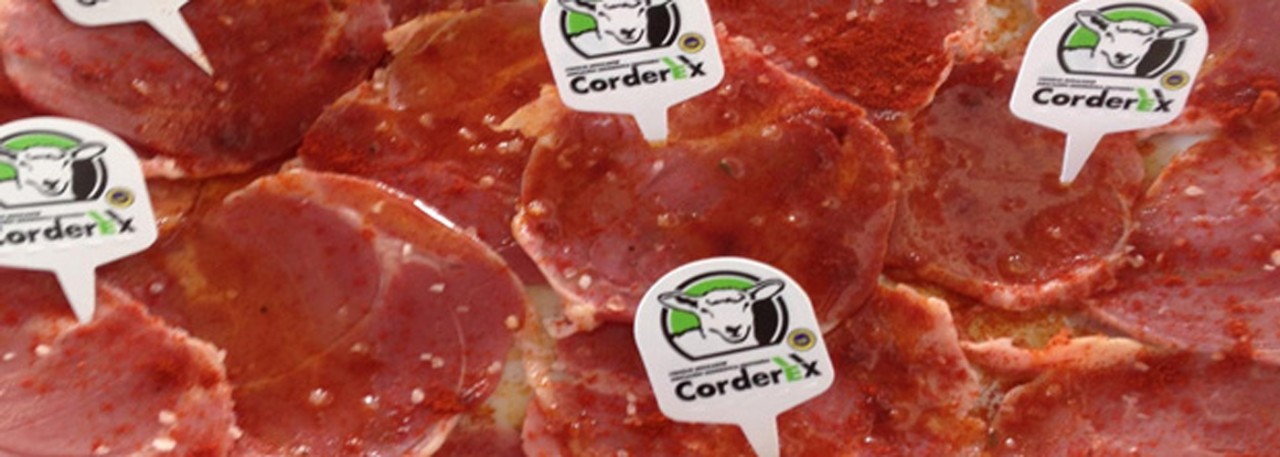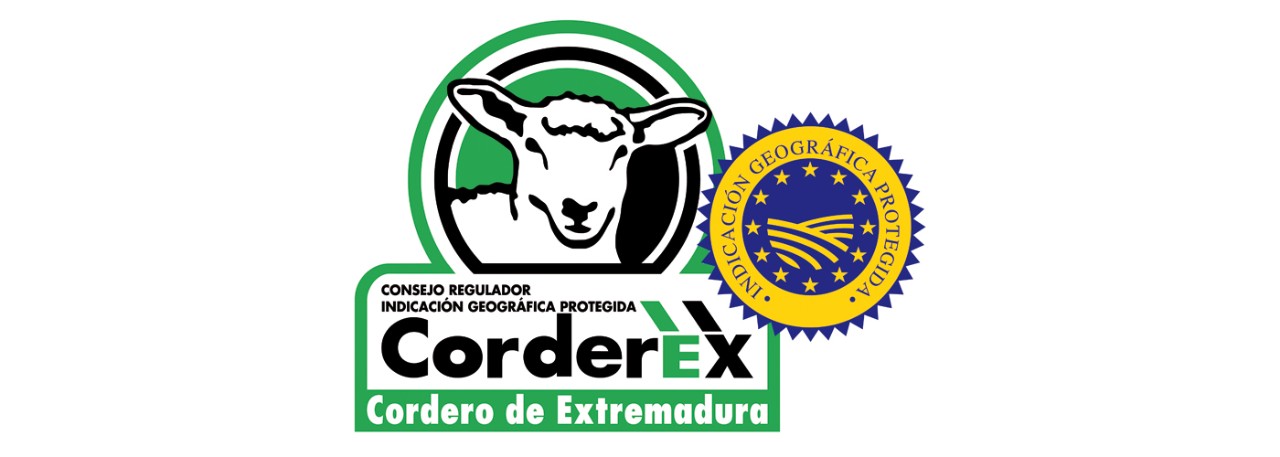.png.transform/rendition-xs/image_image%20(1).png)
Cordero de Extremadura PGI
Meat from lambs whose dams are from the Merino breed or Merino cross-breeds with Merino Precoz, Merino Fleischschaf and Île de France, provided that at least 50% of the lambs' parentage is from the Merino breed. The sires must be Merino line breeds (Merino, Merino Precoz, Merino Fleischschaf, Île de France and Berrichon du Cher), either pure-bred or simple hybrid.
Tasting notes
The meat is pink to pale pink in color. It has an excellent texture with a very pleasant taste and a moderate level of streaking of intramuscular fat. The meat is very tender and low in fat, mainly due to the age at which the lambs are slaughtered and to the rearing methods used. The well distributed and good quality fat gives the meat an excellent bouquet and succulence.
Other notes
The weight of the carcasses is less than 16 kg / 35.2 lbs for male lambs and less than 14 kg / 30.8 lbs for female lambs. The degree of fat is between 2 and 3, and the carcass conformation is O class and higher.
Production / Processing method
The production system applied on farms registered with Cordero de Extremadura Protected Geographical Indication is the area's traditional extensive and semi-extensive method, with an extensive system or regime used for breeding stock and lambs during the rearing stage. The feeding regime is based on the use of the pasturelands’ natural resources (wooded scrublands), which are grazed throughout the year, and supplemented where necessary by straw, grain, fodder, by-products and concentrates, composed primarily of cereals, oilseeds and protein crops. The duration and quantity of the feed supplements depends on existing resources and on the needs of the animals at that particular time. The lambs stay with their mothers and feed on maternal milk until they are weaned.
From the age of three weeks, their diet can be supplemented with starter feed, which is specially suited to them. During this stage, the lambs are fed with milk from these ewes, whose breed and diet give their milk special properties that are different from the milk produced in other areas by other types of sheep. Its composition gives the meat from lambs fed on this milk different properties.
In addition, during this period, the lambs remain on an extensive regime with their mothers, moving around with the rest of the flock as they graze; this increases the levels of myoglobin in the muscle tissue. The animals selected for slaughter are finished exclusively under cover and fed on concentrates made primarily from cereals, pulses and cereal straw.
Slaughter and carcass dressing must be done only in slaughterhouses and butchering plants previously approved and registered by the Regulatory Council. These processes may not be carried out alongside the processing of other animals not belonging to the Protected Geographical Indication. The Regulatory Council is also involved in both the dressing and butchering of the carcass, verifying that carcass presentation or butchering does not lead to a reduction in quality. The carcass must at all times be traceable to the animal from which it comes.
Geography / Relief and climate
The region's physical and geographical characteristics are consistent with those of pasturelands and other grasslands that can be used for extensive grazing, and covers districts with particular features that distinguish it from other geographical areas: geophysical characteristics and soils, climate, rainfall, hours of sunshine, native flora and fauna and pastoral products. The area contains plains and peneplains with an altitude of 200-800 m / 656-2,624 ft, surrounded by mountain ranges of varying heights and the foothills of the Baetic and Central mountain systems, with major ranges such as the Guadalupe, Montánchez and San Pedro sierras.
Average annual temperatures are 16-17ºC / 60.8-62.6ºF. Average January temperatures are 6.8-8.1ºC / 44.2-46.5ºF. The high temperatures in summer provide a contrast with winter frosts.
Generally speaking, the area is subject to a semi-arid Mediterranean climate, with annual rainfall of 450-850 mm and cold index values (the average of the daytime minimum temperatures in the coldest month of the year) of 2-6ºC / 35.6-42.8ºF, tempered by the influence of the ocean and becoming more extreme in the north-eastern part of the area. This area typically has cold winters and hot summers, with very variable precipitation in terms of quantity and spread for different years, although they are heavier in winter and early spring and negligible in the summer. Extremadura has over 3,000 hours of sunshine per year.
Regulatory Council
Consejo Regulador de la IGP Cordero de Extremadura
Avenida Juan Carlos I, 47
06800 Mérida (Badajoz)
Tel: (+34) 924 310 306
Fax: (+34) 924 387 278
corderex@corderex.com
www.corderex.com
Sources:
- Spanish Ministry of Agriculture
It has an excellent texture with a very pleasant taste and a moderate level of streaking of intramuscular fat.


- Extremadura 1
- Extremadura 2

Extremadura
